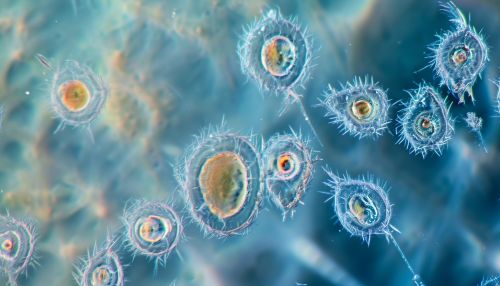Choanozoa
Overview
Choanozoa, also known as choanoflagellates, are a group of free-living unicellular and colonial flagellate eukaryotes considered to be the closest living relatives of the animals. They are characterized by the presence of a single flagellum surrounded by a collar of microvilli, which form a unique filter-feeding apparatus. This group is of particular interest to evolutionary biologists as studies of choanozoa can provide insights into the origin of multicellularity in animals.
Classification
Choanozoa belong to the kingdom Protista, and are classified under the phylum Choanozoa. The group is divided into two main classes, the Craspedida and the Acanthoecidae, based on differences in their cellular structure and life cycle. Craspedida are predominantly unicellular and solitary, while Acanthoecidae are often colonial.
Morphology
The most distinctive feature of choanozoa is their flagellum and collar complex. The flagellum is a whip-like structure that aids in movement and food capture, while the collar of microvilli acts as a filter for feeding. The body of a choanozoan cell is spherical or ovoid and is covered by a thin layer of cytoplasm.


Life Cycle
The life cycle of choanozoa is complex and involves both asexual and sexual reproduction. Asexual reproduction occurs through binary fission, where a single cell divides into two identical daughter cells. Sexual reproduction is less common and involves the fusion of two cells to form a zygote, which then undergoes meiosis to produce haploid offspring.
Ecology
Choanozoa are found in a wide range of habitats, from freshwater to marine environments. They play a crucial role in these ecosystems, acting as primary consumers by filtering bacteria and other microorganisms from the water. Some species of choanozoa are also known to form symbiotic relationships with other organisms, such as sponges and corals.
Evolutionary Significance
As the closest known relatives of animals, choanozoa have been the focus of numerous studies aiming to understand the evolutionary transition from unicellular to multicellular life. The similarities between choanozoa and the cells of early animals, particularly in their flagellum and collar structure, suggest that these organisms may share a common ancestor.
